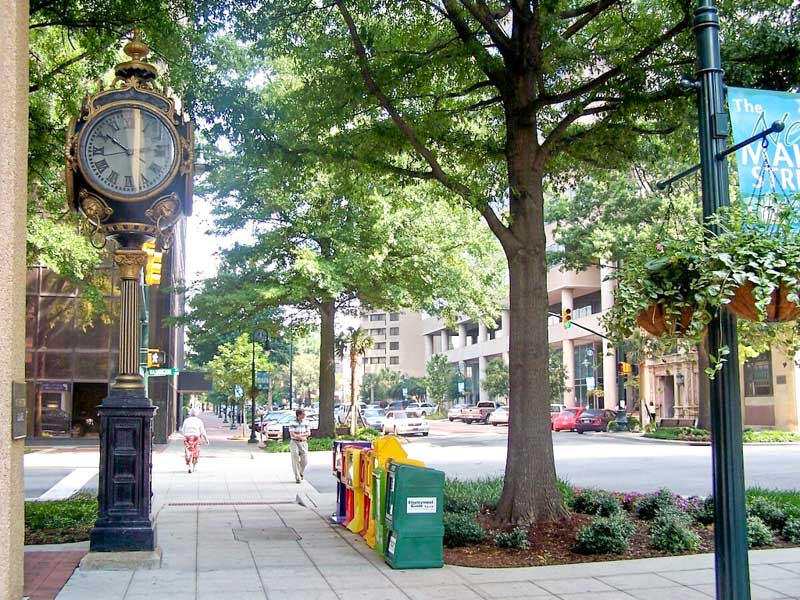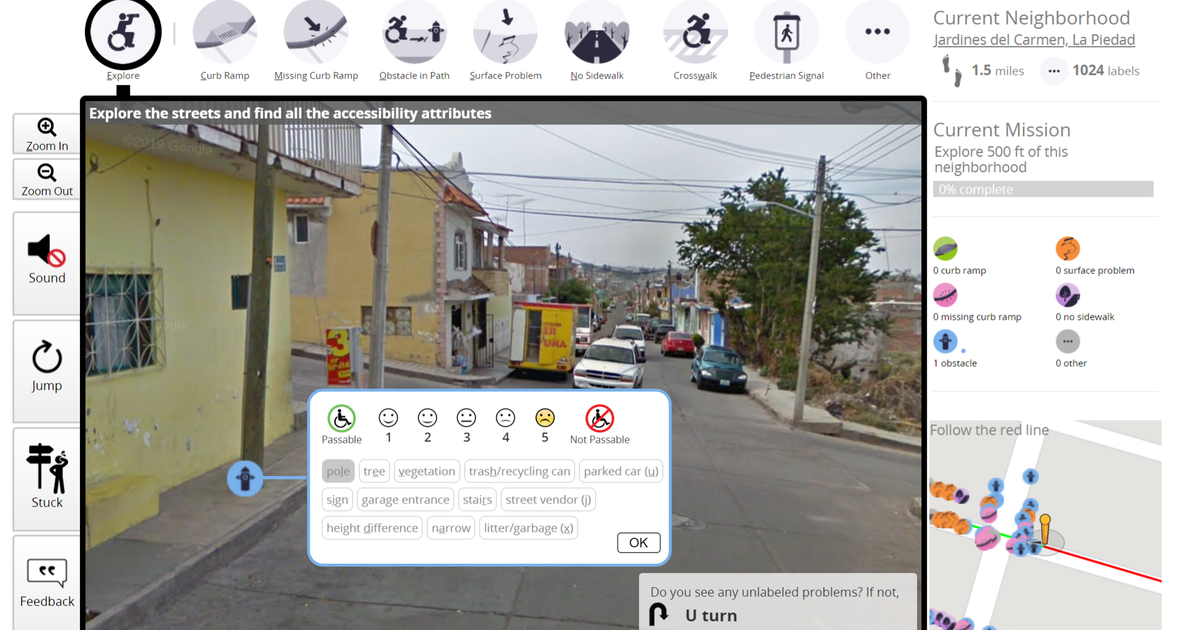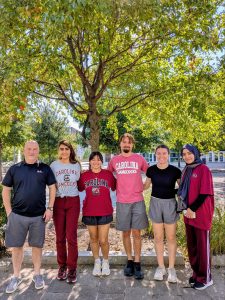
Sidewalks are vital elements of the built environment that complete and connect neighborhoods. They can provide opportunities for physical activity, enable safe transportation to work, school, and everyday destinations, and facilitate increased social cohesion within communities, among many other benefits. However, not all streets and neighborhoods have sidewalks, and even those that exist may be in poor condition or have obstacles or barriers, especially for people with mobility challenges.
The Columbia Sidewalks Project (CSP) is a two-part study designed to better understand the role of sidewalks in promoting community health and well-being. The first phase involves a systematic literature review to understand existing research about sidewalks and health. During the second phase, we will collect detailed data about streets and sidewalks across Columbia, SC, and examine issues related to equity and health.
Phase 1: Systematic Literature Review about Sidewalks and Health
The goal of the first phase of the CSP is to conduct a comprehensive review of existing literature about how sidewalks are associated with various physical health outcomes. Four databases, including Google Scholar, PubMed, Scopus, and Web of Science, were searched using a variety of terms related to sidewalks (e.g., sidewalk quality, accessibility, condition, maintenance, connectivity, pedestrian infrastructure) and physical health (e.g., physical activity, obesity, cardiovascular disease, diabetes, high blood pressure), resulting in a total of 9,286 articles that were screened against key inclusion and exclusion criteria. Full-text reviews resulted in a final set of 184 articles, from which data are being extracted to answer questions such as (but not limited to):
- What methods have been used most often to evaluate sidewalk access and quality?
- Is increased access to sidewalks associated with better physical health?
- What elements of sidewalk quality and condition are related to improved health outcomes?
Phase 2: Sidewalks and Health Equity in Columbia, SC

For the second phase of the CSP, the primary aims are to:
Aim 1: Assess the availability and quality of sidewalks on all streets in Columbia, SC
We will employ the Project Sidewalk platform, which facilitates remote auditing using Google Street View, to evaluate sidewalk access for all streets in Columbia. All street segments will be coded for attributes such as no sidewalk, curb ramp, obstacles in path, surface problems, crosswalks, and pedestrian signals.
Aim 2: Evaluate the association between sidewalk accessibility/quality and health outcomes
Using multilevel regression models, health data on issues such as obesity, mobility disabilities, physical inactivity, and depression will be compiled and compared to sidewalk availability and quality for all census tracts in Columbia.
Aim 3: Examine disparities in sidewalk access and quality across various sociodemographic groups.
For all census block groups and tracts in Columbia, we will spatially and statistically examine inequities in sidewalk availability and quality according to a variety of sociodemographic factors: 1) percentage of population under 125% of the federal poverty threshold; 2) percentage unemployed; 3) median household income; 4) percentage with less than high school education; 5) percentage 65 years or older; 6) percentage 17 years or younger; and 7) percentage racial/ethnic minority population.
Study Dissemination
We aim to share key findings and lessons learned from the study through a variety of reports, presentations, and publications. Please check back periodically or reach out to the study team for updates.
Team Members

Pictured (from left to right): Dr. Andrew Kaczynski, Farnaz Hesam Shariati, Ella Forrester, Darwin Newman-Norlund, Carina Burdick, and Fatemah Abvisani
Not pictured: Baylis Wright, Sadaf Adhami, Nithin Bommareddy, Jason Czerwinski, and Riley Smith
Study Timeline
Both phases of the CSP are ongoing and are expected to be completed by the end of 2025.
For more information, please feel free to reach out to Dr. Kaczynski or Farnaz Hesam Shariati.
